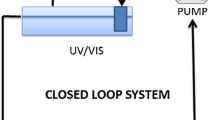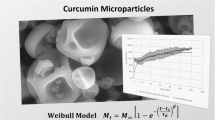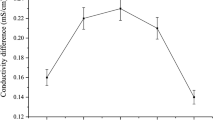Abstract
Nonhardened gelatin-acacia microcapsules were studied for encapsulation of microdroplets of oil solution containing a lipophilic drug as core material and ready disintegration with release of micro oil droplets in the gastrointestinal tract. Probucol and S-312-d, a Ca-channel blocker, were employed as model lipophilic drugs. Glyceryl tricaprylate and tricaprate mixture solutions containing these drugs were encapsulated according to the complex coacervation method and were recovered as free-flowing powders without any hardening (cross-linking) step. The microcapsules obtained were disintegrated, and the emulsion was reproduced within 3 min at 37°C in the first or second test solution defined in the Japanese Pharmacopeia XII. When the microcapsules were stored as a powder at room temperature in a closed bottle, no significant change in their appearance or disintegration time upon rehydration was observed even after 1 year. Oral bioavailabilities of model drugs from the microcapsules were tested in rats and dogs and compared with those from other conventional formulations. Gastrointestinal absorption of both probucol and S-312-d from the microcapsules was remarkably more efficient than that from other formulations such as powders, granules, or oil solution. The proposed method for microencapsulation could be useful for powdering drug-containing oil solutions or O/W emulsions while maintaining excellent bioavailability.
Similar content being viewed by others
REFERENCES
J. R. Nixon, S. A. H. Khalil, and J. E. Carless. Gelatin coacervate microcapsules containing sulphamerazine: Their preparation and the in vitro release of the drug. J. Pharm. Pharmacol. 20:528–538 (1967).
T. Heya, H. Okada, Y. Ogawa, and H. Toguchi. Factors influencing the profiles of TRH release from copoly (d,l-lactic/glicolic acid) mirospheres. Int. J. Pharm. 72:199–205 (1991).
B. Sa. Studies on the release of theophylline from polyvinyl-acetate microspheres. Drug Dev. Ind. Pharm. 17:893–900 (1991).
T. Uchida, I. Fujimoto, and S. Goto. Preparation and dissolution experiment of acetylated pullulan microcapsules cotaining oral cephem antibiotics. Yakuzaigaku 49:46–52 (1989).
Y. Takeda, N. Nambu, and T. Nagai. Microencapsulation and bioavailability in beagle dogs of indomethacin. Chem. Pharm. Bull. 29:264–267 (1981).
M. Komatsu, K. Tagawa, M. Kawata, and S. Goto. Biopharmaceutical evaluation of gelatin microcapsules of sulfonamides. Chem. Pharm. Bull. 31:262–268 (1983).
P. L. Madan, D. K. Madan, and J. C. Price. Clofibrate microcapsules: Preparation and release studies. J. Pharm. Sci. 65:1476–1479 (1976).
O. A. Gohary and S. E. Gamal. Release of furosemide from sustained release microcapsules prepared by phase separation technique. Drug Dev. Ind. Pharm. 17:443–450 (1991).
S. Goto, M. Komatsu, K. Tagawa, and M. Kawata. Preparation and evaluation of gelatin microcapsules of sulfonamides. Chem. Pharm. Bull. 31:256–261 (1983).
K. J. Palin and C. G. Wilson. The effect of different oils on the absorption of probucol in the rat. J. Pharm. Pharmacol. 36:641–643 (1984).
K. Ueno, H. Fujitomo, I. Nishino, and T. Umeda. Simultaneous determination of a new dihydropyridine calcium blocker and its pyridine metabolite in dog plasma by column switching high-performance liquid chromatography with electrochemical and ultraviolet detection. Anal. Sci. (Japan) 7:727–731 (1991).
T. Hakata, H. Hirano, H. Sato, and M. Iijima. Effect of desiccating agents on disintegration time of soft gelatin capsules. Yakuzaigaku 52:99–105 (1992).
Author information
Authors and Affiliations
Rights and permissions
About this article
Cite this article
Jizomoto, H., Kanaoka, E., Sugita, K. et al. Gelatin-Acacia Microcapsules for Trapping Micro Oil Droplets Containing Lipophilic Drugs and Ready Disintegration in the Gastrointestinal Tract. Pharm Res 10, 1115–1122 (1993). https://doi.org/10.1023/A:1018951814939
Issue Date:
DOI: https://doi.org/10.1023/A:1018951814939




